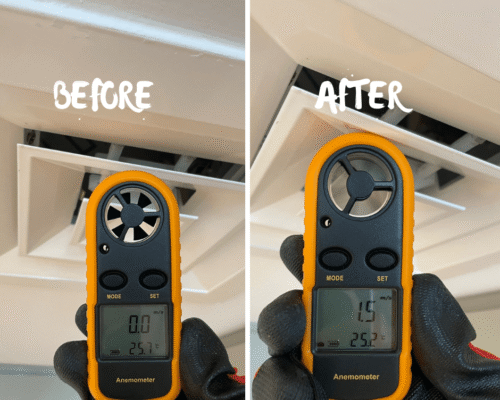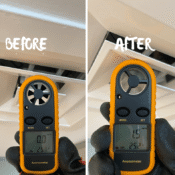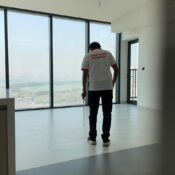How to Inspect Your Dubai Property: The Ultimate Snagging Checklist

Many new homes have hidden issues waiting to surface after move-in. This is where a snagging inspection becomes critical.
Whether a villa, apartment, or townhouse, buying a property in Dubai is a significant investment. But handing over doesn’t always mean perfection.
In this guide, we will explain the ultimate snagging checklist for Dubai properties, what to inspect, when to schedule it, and how UBA conducts snagging inspections.
What Is a Snagging Report Checklist?
A snagging report checklist is a detailed document used during a property inspection to identify and record every visible or hidden defect before handover. It acts as a quality assurance list that helps you to ensure that your new Dubai property meets construction, finishing, and safety standards.
The snagging list covers all aspects of your home, including structure, plumbing, electrical, HVAC systems, paintwork, doors, windows, and tile finishes. Each issue found during the inspection, such as hollow tiles, cracks, water leaks, or misaligned fittings, is photographed, labeled, and added to your snagging report for submission to the developer.
Why a Snagging Inspection Is Essential in Dubai
Dubai’s real estate market is growing fast, with many projects built under tight schedules. Even with strong regulation, things like finishing shortcuts or overlooked quality checks happen.
A professional snagging inspection can:
- Catch hidden defects before you accept handover, so the developer is responsible.
- Prevent costly repairs later, such as plumbing leaks, electrical faults, tile failures, etc.
- Ensure the property delivered matches the promises & contract.
- Improve your bargaining power with developers if repairs are required.
In most cases, owners discover problems only after it’s too late, vital systems malfunction, tiles crack, or moisture seeps in. Don’t let that happen to you.
When to Schedule Your Snagging Inspection
Timing matters. Here are the optimal moments:
- Just before handover – When the property is complete, but before signing acceptance.
- During the Defect Liability Period (DLP / 11 months warranty) – As the warranty expiration nears, to catch defects, developers must fix.
- After renovations or major handover changes – A fresh snagging helps if structural or MEP works have been done.
Book your inspection with a buffer so developers have time to address defects.
What to Inspect: Rooms & Systems (Checklist)
Use this room-by-room / system-by-system checklist during your inspection.
Structural & Finishes
- Walls & ceilings – cracks, uneven plaster, bulging paint
- Floor & tile work – hollow sounds (tap tiles), loose tiles, grout gaps
- Skirting, cornices & trim – misalignment, gaps
Plumbing & Bathrooms
- All taps, showers & pipes for leaks & water pressure
- Drainage: flow rate, blockage potential
- Waterproofing: tiles, balconies, wet areas’ seals
Electrical & Lighting
- All outlets, switches, and light fixtures
- Circuit breaker panel, labeling, safety compliance
- Concealed wiring: any heating of wires or loose cables
HVAC / AC & Ventilation
- AC units: cooling efficiency, odd noises, and drain leaks
- Ducts & vents: airflow consistency, leaks
- Thermostats & control panels functionality
Doors, Windows & Joinery
- Doors & windows open/close smoothly, good seals
- Locks, handles, hinges intact
- Fittings/cabinetry – drawers, wardrobes, kitchen cabinets align
Wet Areas & Waterproofing
- Tiles, grout, silicone seals in kitchens & bathrooms
- Verify no visible signs of moisture or damp stains
Safety & Compliance
- Smoke detectors, emergency exits
- Railings & balcony safety
- Electrical safety compliance, earthing, load balance
Standards & Best Practices (Dubai / International)
Dubai construction often references international standards. Some key benchmarks:
- BS 5385 (UK Tiling Standard) allows localized voids beneath tiles up to 20%; in heavy-traffic floors, they are under 10%.
- ANSI A108 (US Standard) requires 80–90% adhesive coverage; in wet or high-use zones, up to 95%.
In practice, for Dubai:
- In dry areas, up to 20% of hollow tiles may be accepted in many projects.
- In Wet areas & balconies, accept no more than 5–10% hollow tiles
- Usually, zero hollow areas are allowed in luxury finishes.
Your snagging inspection should use these standards as benchmarks to judge defects.
How UBA Performs Snagging Inspections
At UBA, we use a systematic and professional method to ensure no defect is missed. Our process:
- On-site Walkthrough – Our certified inspectors visit your property with tools like moisture meters, laser levels, and thermal cameras.
- Room-by-Room Inspection – Each room, including floors, walls, plumbing, and AC, is checked against our checklist.
- Photo & Video Documentation – We record every defect with HD images, explaining the location and seriousness.
- Report Preparation – You receive a comprehensive snagging report within 23 hours.
- Developer Submission & Follow-Up – Use our formatted defect report to submit to the developer. We assist in follow-up and re-inspection once fixes are done.
Common Snagging Defects Found in Dubai Properties
Here are some defects we frequently find during snagging inspections in Dubai:
- Hollow or cracked tiles
- Paintwork cracks, uneven finishes, blistering
- Plumbing leaks under sinks or in concealed pipes
- Faulty electrical switches / loose sockets
- AC units that don’t cool evenly or leak condensate
- Misaligned doors or windows, poor sealing
- Poor grout/tiling finishing in wet areas
These may look minor, but they often lead to bigger issues if ignored.
What to Do After the Snagging Report
Once you have your report:
- Review & Prioritize – Sort defects by severity (critical, major, minor).
- Submit to Developer – Provide the developer with the defect list and request rectification.
- Set a Repair Timeline – Request a timeline for fixes, ideally letting you inspect before final acceptance.
- Re-inspection – After the developer completes repairs, schedule a follow-up inspection to confirm that all issues are resolved.
Tips to Prepare for Snagging & Maximize Your Inspection
- Ensure utilities like water and electricity are on
- Provide access to all rooms, cupboards, and storage
- Bring your developer’s floor drawings or finishes schedule
- Walk with the inspector and ask questions
- Document defects yourself in photos and video as backup
- Be ready to negotiate with the developer – your report gives you strength
Are You Ready to Snag Your Property?
A professional snagging inspection is your best defense against hidden defects and costly repairs. Using the checklist above, you can understand what to look for when snagging. But hiring certified experts like UBA gives you the added advantage of experience, tools, and actionable reports.
Don’t risk your property investment.
Book your professional snagging inspection with UBA today and ensure your home is handed over defect-free.
Call/Whatsapp +971 562686549
Visit https://ubaasset.ae/services/snagging-company-dubai
All Categories
Recent Posts
How Many Hollow Tiles are Acceptable in Dubai Construction?
Common Snagging Issues Found in Dubai Properties
Have questions? Feel free to write us
Call expert
+971 562686549
Write email
hello@ubaasset.ae
Visit office
Port Saeed, NGI House - Office no 403-70 Street, Deira, Dubai, United Arab Emirates




